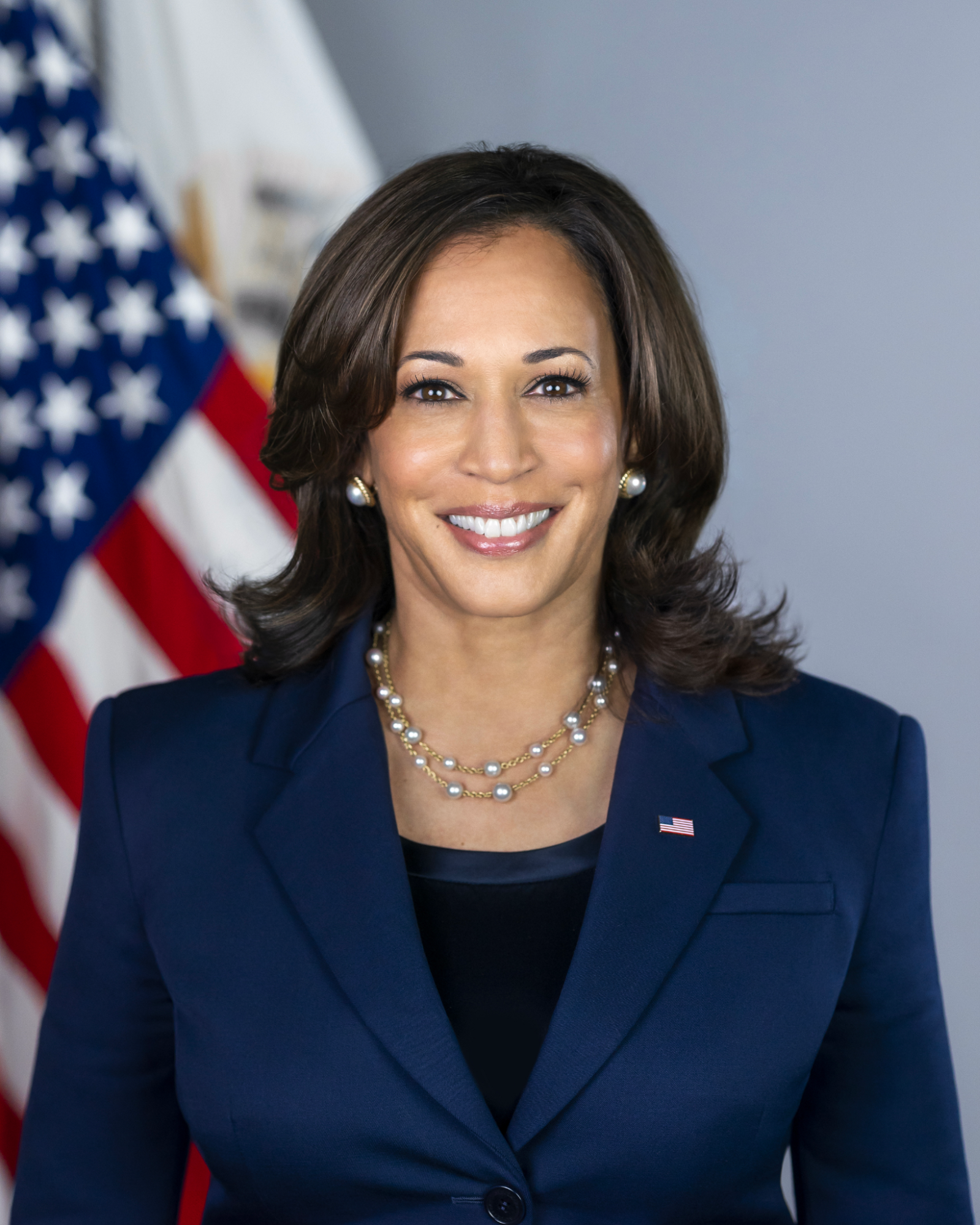5.1 Chapter Overview and Learning Objectives

Figure 5.1 Vice President Kamala Harris.
As first in the presidential line of succession, and president of the U.S. Senate Vice-President Kamala Devi Harris (figure.5.1) has risen to a higher elected office than any other woman or Asian person in American History. Only former President Barack Obama has risen farther as a Black person in the U.S. political system. As the daughter of two international students who has transcended many of the barriers faced by BIPOC women her story is read by some as proof of how far one can rise in the U.S. It can also be read as a story about the U.S. Political system is responding to rapid social change.
When we talk about the sociological imagination, we often focus on how public issues impact personal problems, but it can also help us understand how public issues impact personal successes. For example, understanding that the U.S is becoming increasingly multiracial, with 6.3 million adults identifying as mixed race in the 2020 U.S. Census, with steep increases in numbers of Asian and Caribbean immigrants (Harris’ mother was from India and her father from Jamaica) it makes sense that 3 out of the last 4 winning presidential tickets featured a multiracial child of an immigrant (Parker & Barroso, 2021).
We can also see Harris’ rise as a reflection of rapidly changing norms around gender and family. Harris, who is a Christian, did not marry Doug Emhoff, who is Jewish, until she was 49. Prior to 1965, interracial marriage was still illegal in many states and interfaith marriages were rare. Today nearly ⅕ of all marriages are interracial and ⅓ are interfaith. Emhoff left a lucrative law practice to support his wife, a move that would have been shocking a generation ago, called a “no brainer” in 2021 . The average age of first marriage is now 28, and blended families are more common than not. Gender norms for women in political leadership are changing more slowly, but there is a high public desire to see more women in executive leadership positions. These rapidly changing demographics and social norms pose a strong challenge to existing systems of power. (Parker & Barroso, 2021; Lakritz, 2021; U.S. Census, 2022).
Before we dive into this chapter, think about these questions:
Why have all the US Presidents so far been men?
- How does patriarchy hold power in the U.S. political system?
- How have changing demographics challenged the U.S. political system?
- How can critical theory create a shared language to describe the social conditions present during times of social change?
In sociology, we perform this analysis of critiquing the dominant culture through established sociological frameworks that inform how we can view social issues in a broad context. As we saw in Chapter 1, the sociological imagination is one concept used to consider and focus on aspects of society using theoretical frameworks. In this chapter, we’ll explore the strengths and weaknesses of other major theories in sociology, such as Conflict Theory, Functionalism, Feminist Theory, and Symbolic Interaction for their usefulness and utility in critiquing individuals (microsociology) and institutions (macrosociology) in power.
5.1.1 Learning Objectives
After reading this chapter, you will be able to do the following:
- Apply the sociological imagination to discussions of gender and sexuality.
- Contextualize the major sociological theories from as they relate to gender and sexuality.
- Explain why sociological theories are essential to interpreting gender.
- Explain the relationships between crip theory, queer theory, and feminist theory.
5.1.2 Preview of Key Terms
You will need some of these key terms to connect to ideas in this chapter and throughout this textbook. You can find the full list of key terms and definitions at the end of this chapter. This list is not exhaustive, but it begins a deeper understanding of the skills and concepts of critiquing the dominant culture.
- Feminism: an oppositional system of power that challenges male privilege and sexist gender norms.
- Macro-level analysis (macrosociology): a sociological perspective that looks at trends among and between institutions and societies and it emphasizes the influence of structures, institutions, and systems.
- Micro-level analysis (microsociology): a sociological perspective that looks to study small groups and individual interactions, it places a strong emphasis on context, meaning making, and interactions.
- Sociological imagination: seeing the relationships between individual experiences to their larger social influences.
- Theory: a model of how a key component of something works based on decades of research.
5.1.3 Licenses and Attributions for Chapter Overview and Learning Objectives
“Chapter Overview and Learning Objectives” by Nora Karena is licensed under CC BY 4.0.
Figure 5.1 Photo of Vice President Kamala Harris By Lawrence Jackson – https://www.whitehouse.gov/administration/vice-president-harris/ (direct download), Public Domain, https://commons.wikimedia.org/w/index.php?curid=103324295

